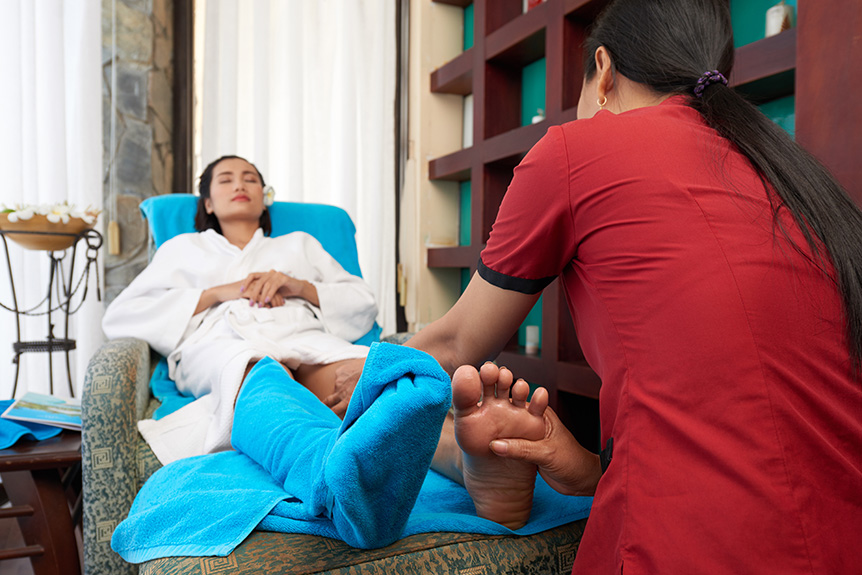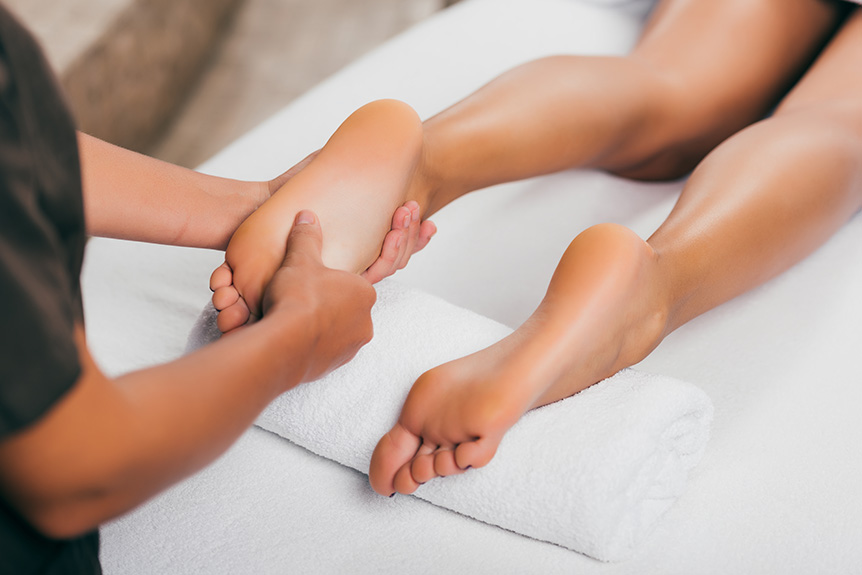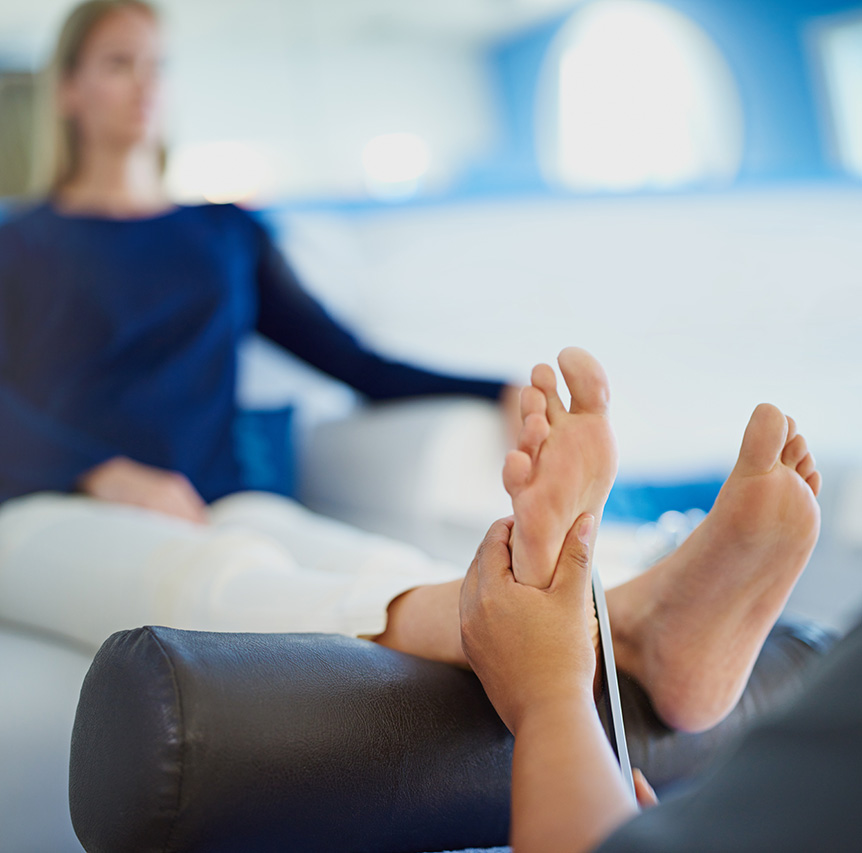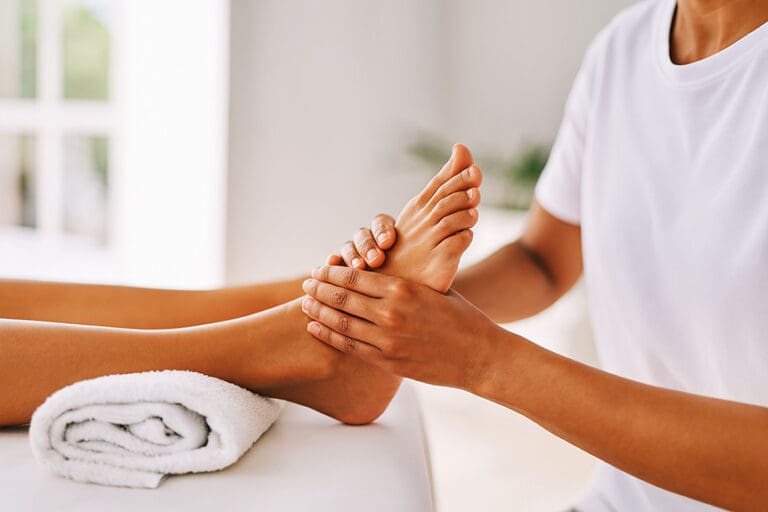It may aid fertility indirectly by reducing stress, improving relaxation, and easing pelvic tension. Small, mixed-quality studies report benefits for menstrual comfort and perceived stress, but evidence does not confirm higher pregnancy rates. When provided by trained practitioners, it is generally safe and can complement medical care. Techniques often target endocrine and pelvic reflex points to encourage parasympathetic balance. It should not replace fertility treatments. Those considering it can learn how sessions, points, and timing may support overall reproductive wellbeing.
Understanding It and Reproductive Health

How does reflexology relate to reproductive health? It is a complementary therapy that applies pressure to mapped points on the feet, hands, or ears thought to correspond with organ systems, including the hypothalamic–pituitary–gonadal axis, uterus, ovaries, and prostate.
From a clinical perspective, potential pathways include down‑regulation of stress responses, modulation of autonomic tone, improved sleep, and perceived relief of pelvic tension—factors that may support sexual wellbeing and cycle regularity. Causation should not be assumed.
At Spa & Massage in London, therapists deliver zone therapy with a calm, confidential approach, using measured pressure, steady pacing, and fragrance‑free or gentle aromatherapy oils when appropriate.
Sessions prioritize comfort, warm communication, and clear boundaries. Clients are encouraged to pair zone therapy with medical guidance, nutrition, movement, and adequate rest, and to track symptoms, cycles, and stress over time.
Some athletes also experience benefits from sports massage, such as reduced muscle tension and improved recovery, which highlights the broader impact of targeted therapies on overall wellbeing.
What the Research Says About It and Fertility
Evidence to date on zone therapy and fertility is limited, heterogeneous, and largely low to moderate in quality. Small randomized and observational studies report mixed outcomes: some suggest improvements in menstrual regularity, cycle-related discomfort, or perceived stress, while few show changes in time-to-pregnancy or clinical pregnancy rates.
Methodological issues—tiny samples, inadequate blinding, variable protocols, and reliance on self-report—constrain confidence and generalisability.
Systematic reviews conclude there is insufficient evidence to claim zone therapy enhances fertility outcomes, though it may support wellbeing during fertility journeys.
Safety appears favourable when delivered by trained practitioners, with adverse events rare and mild.
From Spa & Massage’s perspective, zone therapy can be offered as a supportive, non-invasive adjunct to medical care, with clear expectations, careful screening, and outcome tracking, respecting each couple’s intimate goals.
How a Massage Session Supports Hormonal Balance and Stress Relief
In clinical practice at Spa & Massage, massage sessions typically focus on endocrine-related reflex points (such as pituitary, thyroid, and adrenal zones) with the aim of supporting hormonal regulation, while acknowledging that evidence remains mixed.
Gentle, sustained pressure and paced breathing are used to encourage a parasympathetic response, which may reduce stress markers linked to reproductive function.
Consistent, structured session routines—scheduled at regular intervals—are employed to track responses over time and adjust techniques cautiously to the individual.
Targeted Endocrine Reflexes
While claims about zone therapy and hormone regulation should be interpreted cautiously, a targeted approach to endocrine reflexes can plausibly support relaxation and stress modulation—factors linked to reproductive health.
Practitioners commonly focus on reflex maps for the pituitary, thyroid, adrenals, and ovaries/testes, using measured pressure and rhythm to encourage downshifting from vigilance toward ease.
In Spa & Massage clinics, therapists apply consistent, tolerable pressure to the pituitary point (center of the big toe), then sequence work to adrenal zones along the medial arch, followed by thyroid points at the base of the big toe.
This order aims to calm stress reactivity before addressing cycle-related concerns. Sessions remain gentle, pain-free, and client-led.
Evidence is preliminary; clients are advised to combine zone therapy with medical guidance and cycle-aware self-care.
Calming Parasympathetic Response
A massage session can stimulate a parasympathetic shift—marked by slower heart rate, deeper breathing, and reduced muscle tension—which may indirectly support hormonal balance by moderating the stress response. Evidence suggests that parasympathetic activation can lower circulating cortisol and catecholamines, helping restore hypothalamic–pituitary–gonadal signaling.
While causal links to fertility outcomes remain uncertain, reduced autonomic arousal is associated with improved sleep, mood, and menstrual regularity.
At Spa & Massage, therapists apply gentle, sustained pressure to foot zones while cueing unhurried breathing and comfortable warmth, aiming to encourage vagal tone without provoking discomfort. They avoid overly stimulating techniques, prioritising steadiness and clear communication.
Clients are invited to notice subtle shifts—softened jaw, easier breath, a sense of closeness to self—signs consistent with downregulated stress physiology and a body more receptive to cyclical balance.
Consistent Session Routines
Though outcomes vary, a consistent zone therapy routine appears to support stress regulation and menstrual-hormonal stability by establishing predictable cues for relaxation and autonomic downshifting.
Evidence suggests that regular parasympathetic activation may moderate cortisol and sympathetic arousal, factors linked to ovulatory function and cycle regularity.
In Spa & Massage clinics, therapists typically recommend weekly sessions for 4–6 weeks, then review frequency.
Sessions emphasize diaphragmatic breathing, gentle foot warming, and progressive pressure on endocrine, solar plexus, and pelvic reflex points, adjusted to cycle phase and comfort.
Clients are encouraged to pair sessions with steady sleep-wake timing, light evening meals, and reduced caffeine.
Aftercare includes hydration, quiet time, and brief self-press techniques taught in-clinic.
While zone therapy is supportive rather than curative, a steady routine can complement medical fertility care.
Reflex Points Treatment Commonly Used for Fertility Support
Several reflex point treatment are commonly targeted to support reproductive health, though evidence for fertility outcomes remains limited. Practitioners often focus on the reflex areas linked to the ovaries and testes (lateral heel), uterus and prostate (medial heel), fallopian tubes and vas deferens (along the lateral foot), endocrine glands—especially pituitary (center of big toe), thyroid (base of big toe), and adrenal reflexes (medial arch).
Attention is also given to the solar plexus (center of foot) to encourage relaxation, which may help regulate stress-related hormonal patterns.
At Spa & Massage clinics in London, therapists apply gentle, progressive pressure and avoid provoking pain, particularly around the medial heel during menstrual cycles or IVF protocols.
Sessions prioritise balanced stimulation, measured pacing, and clear aftercare, complementing—not replacing—medical fertility care.
What to Expect at Spa & Massage During a Fertility-Focused Massage Session
At Spa & Massage, sessions begin with a brief, confidential consultation to clarify health history and fertility-related goals, ensuring any zone therapy plan remains complementary to medical care.
The treatment typically involves gentle, targeted footwork with measured pressure on mapped reflex areas, adjusted to comfort and clinical indications.
Aftercare includes hydration guidance, simple at‑home foot exercises, and signposting on session frequency, with therapists monitoring responses and advising caution if any adverse symptoms arise.
Personalised Consultation and Goals
During an initial fertility-focused massage session at Spa & Massage, a structured consultation precedes any treatment. Therapists take a careful history: menstrual patterns, cycle tracking, fertility investigations, sleep, stress load, nutrition, activity, and relevant medications.
They ask about conception timelines, assisted reproduction plans, and any red flags that warrant medical referral. Consent, boundaries, and comfort preferences are clarified to create a safe, unhurried setting.
Goals are then agreed: relaxation to moderate stress reactivity, sleep support, perceived cycle comfort, and a cadence for sessions aligned with the client’s timeline.
Expectations are kept realistic—zone therapy is complementary, not a substitute for medical care. Therapists document baseline symptoms and measurable wellbeing markers to review over time, adjusting the plan collaboratively across London clinics to reflect responses and priorities.
Gentle Footwork and Aftercare
With goals and boundaries established, the session moves to gentle, methodical footwork.
At Spa & Massage, therapists apply light-to-moderate pressure across plantar arches, heels, and toes, prioritising reflex points associated with stress modulation and pelvic circulation. Touch remains slow, warm, and attentive; pressure is adjusted continuously to minimise discomfort and avoid provoking sympathetic arousal.
Clients may notice softening in the calves and a steadier breath. Hydration is offered during brief pauses.
Aftercare is deliberate and simple. Our therapists recommend water, a warm shower rather than heat packs, and quiet movement—short walks or stretching—to support circulatory return.
Mild tenderness or increased urination can occur and typically resolves within 24 hours. We advise avoiding alcohol that day, noting cycle changes, and spacing sessions weekly, aligning timing with personal fertility plans.
Safety Considerations and When to Seek Medical Advice

Although it is generally considered low risk, safety depends on appropriate timing, pressure, and practitioner awareness of individual health status.
Evidence does not show this massage treats infertility, but it may support relaxation and symptom relief.
Spa & Massage therapists avoid deep pressure over inflamed tissue, varicose veins, or areas with neuropathy, and modify sessions during preconception and pregnancy.
Medical advice is recommended for: irregular or absent periods, severe pelvic pain, post‑miscarriage care, fertility diagnoses, undergoing IVF or IUI, clotting disorders, uncontrolled thyroid disease, diabetes complications, or unexplained swelling.
Clients should seek urgent care for calf pain with redness, chest pain, sudden shortness of breath, or vaginal bleeding in pregnancy.
In our clinics, therapists coordinate timing around fertility treatments and defer sessions when red flags or medication changes arise.
Conclusion
In the end, zone therapy doesn’t promise babies; it promises calmer nervous systems, steadier sleep, and sometimes tidier cycles—modest victories that reproductive endocrinologists rarely put on lab reports. The evidence base remains limited and mixed, yet stress reduction is a plausible ally for conception. Clients at Spa & Massage find structured, safe sessions that complement—not replace—medical care. Ironic as it seems, by aiming only for relaxation and balance, zone therapy may help create conditions where nature does the ambitious work.



